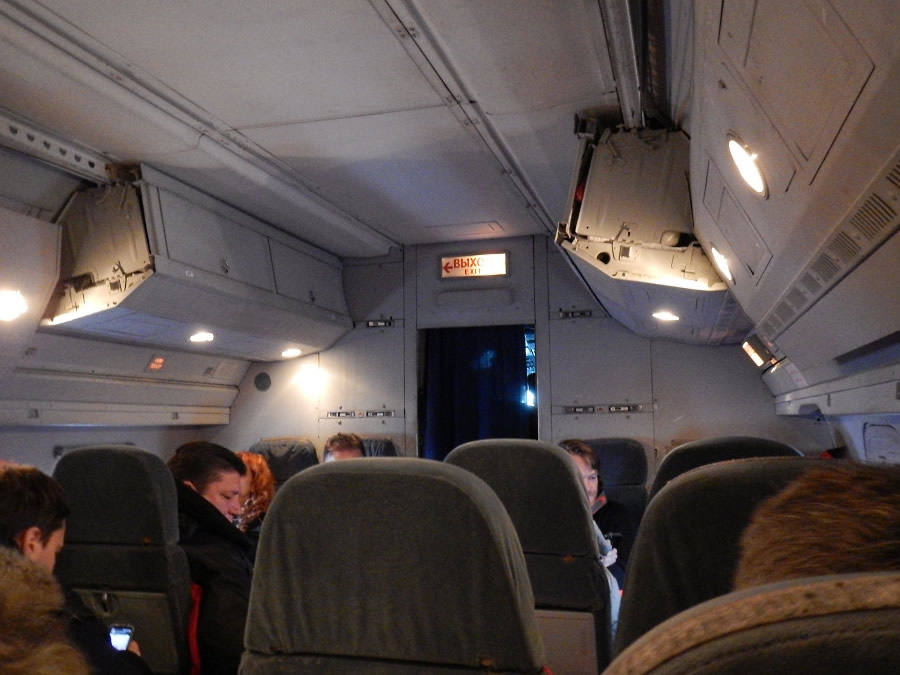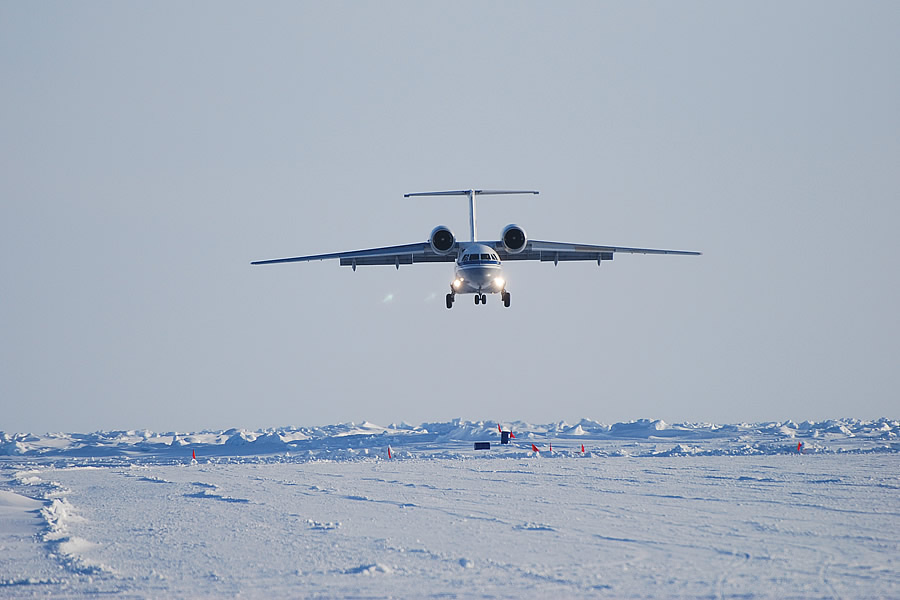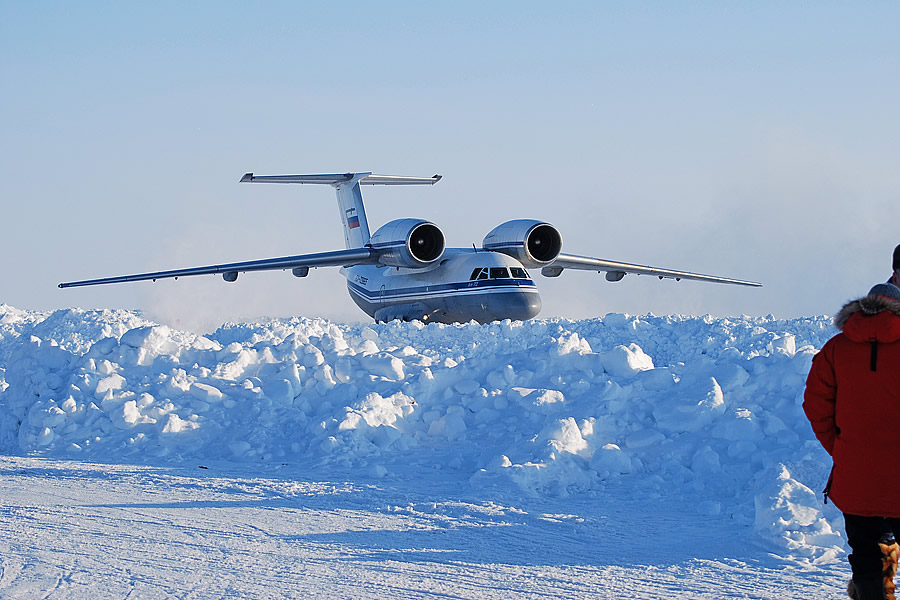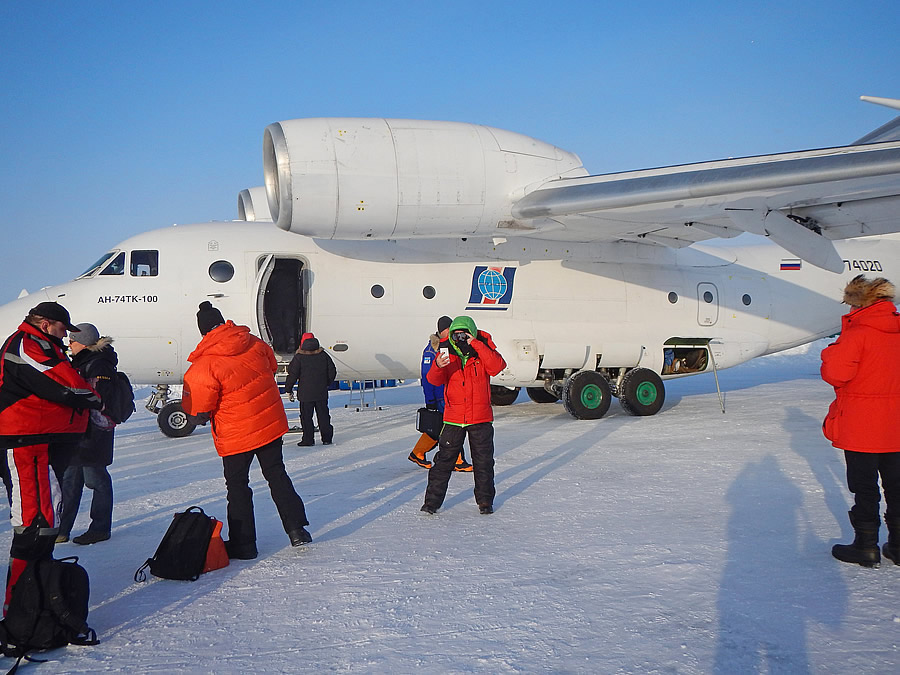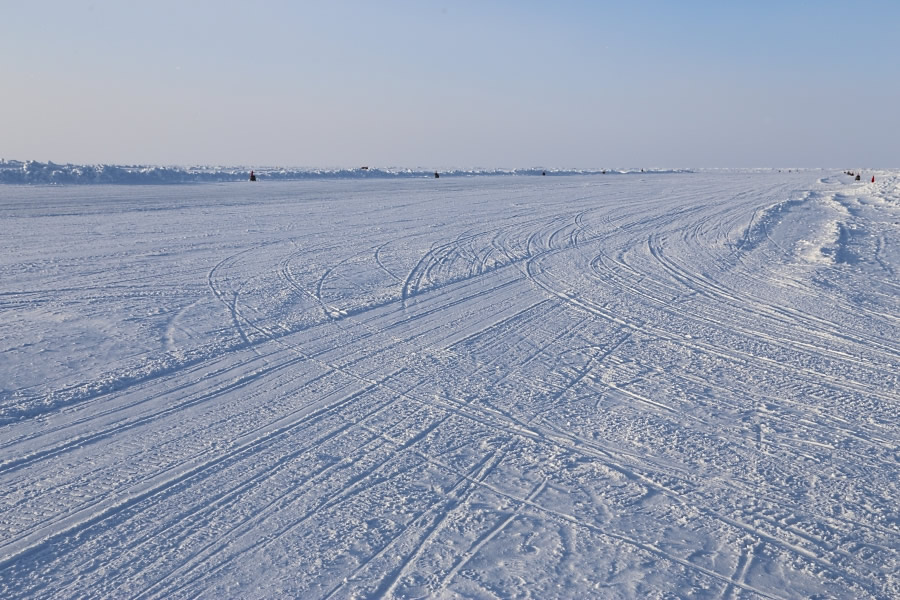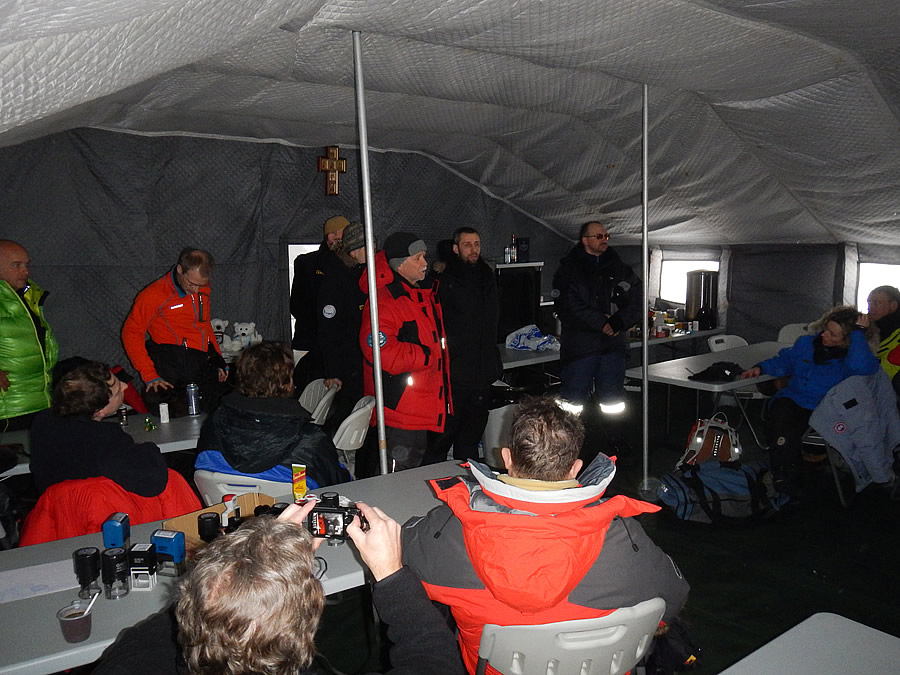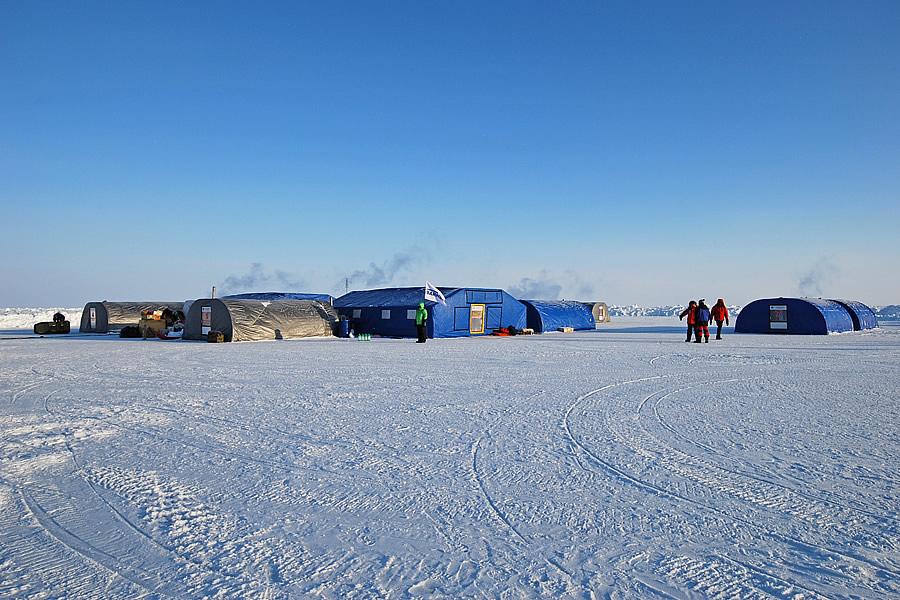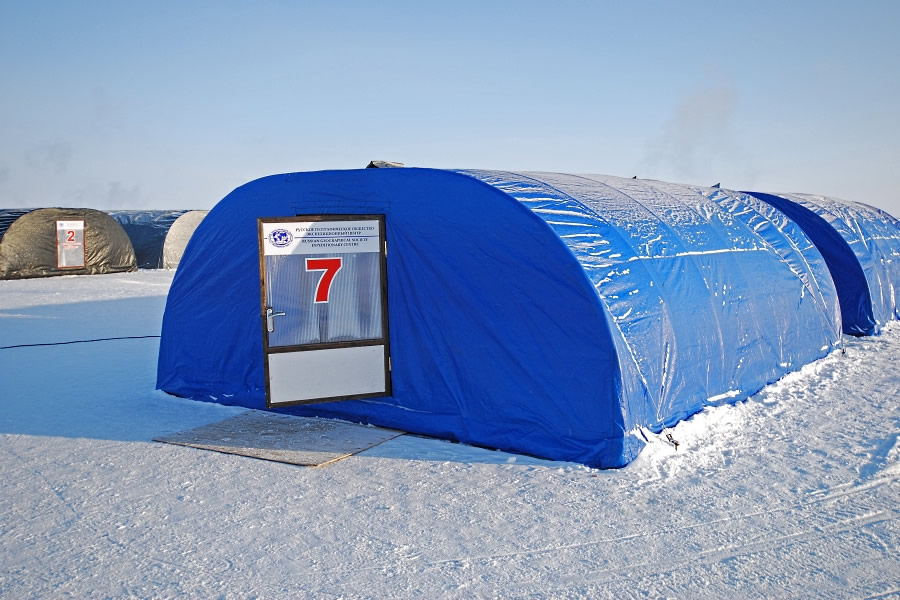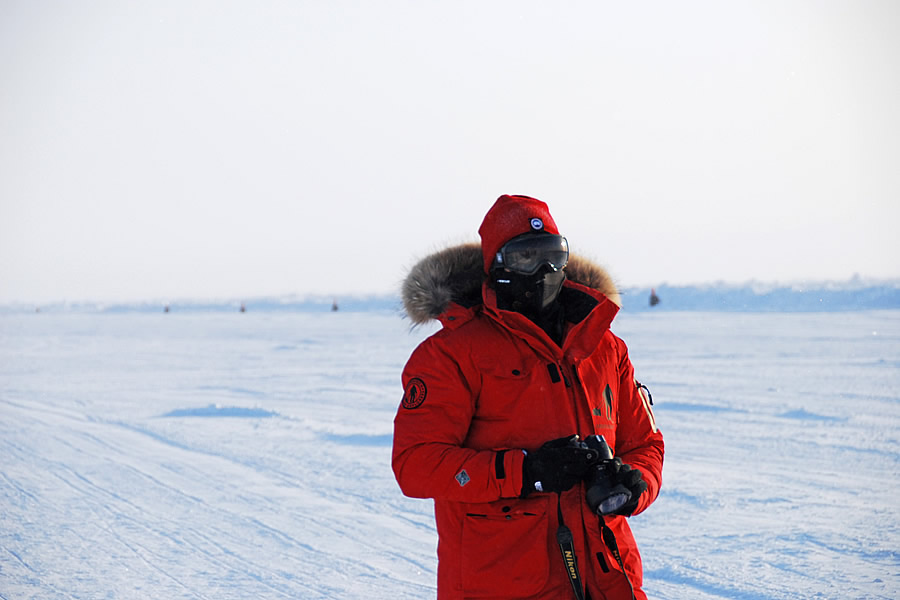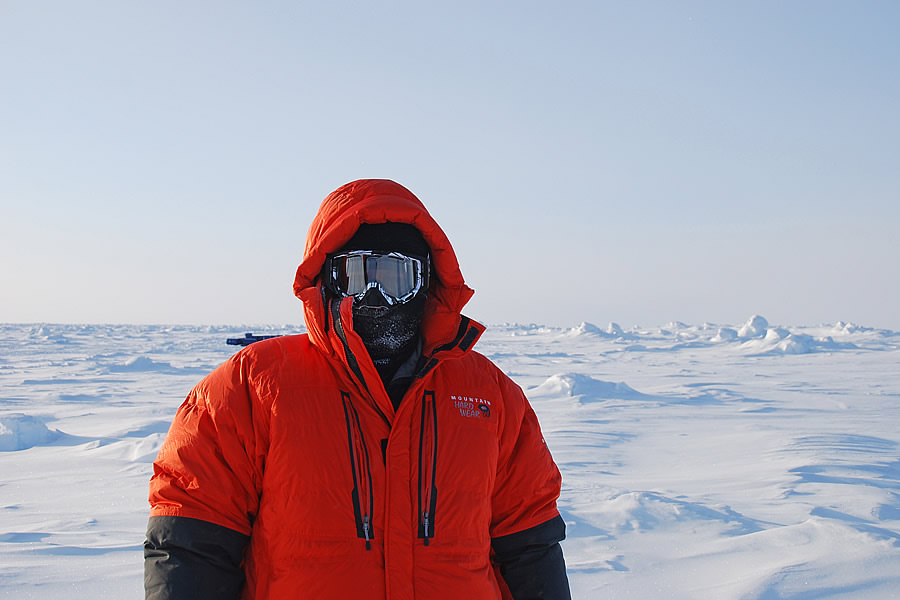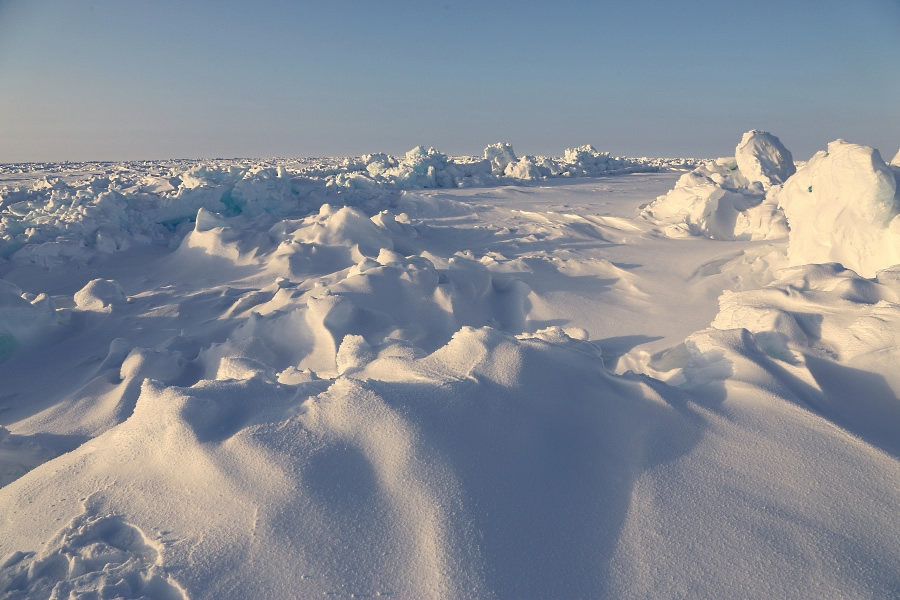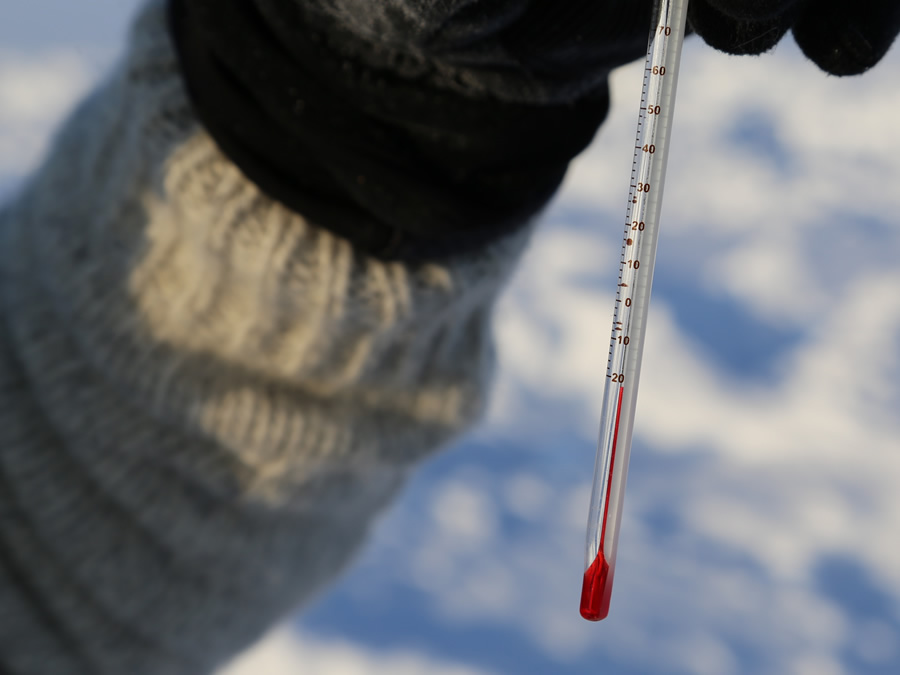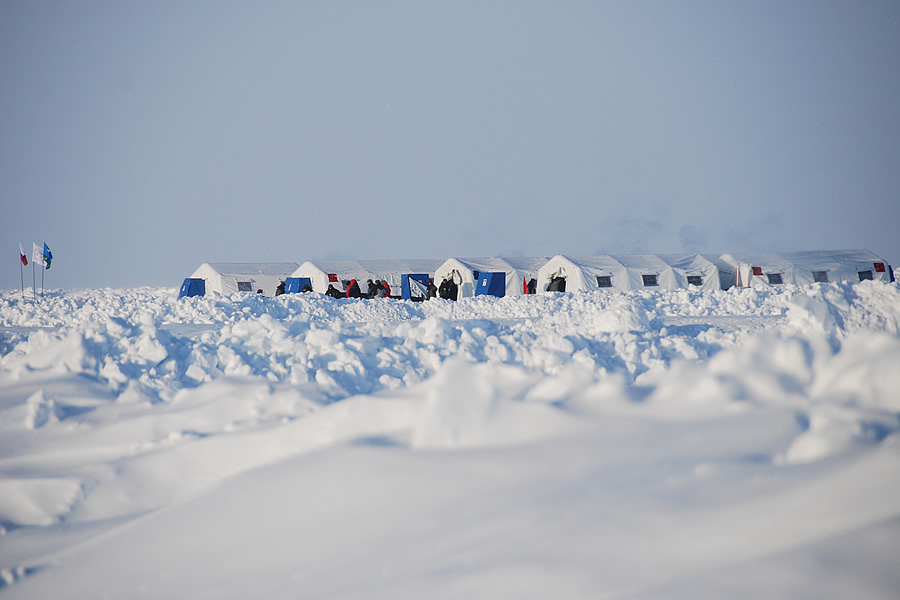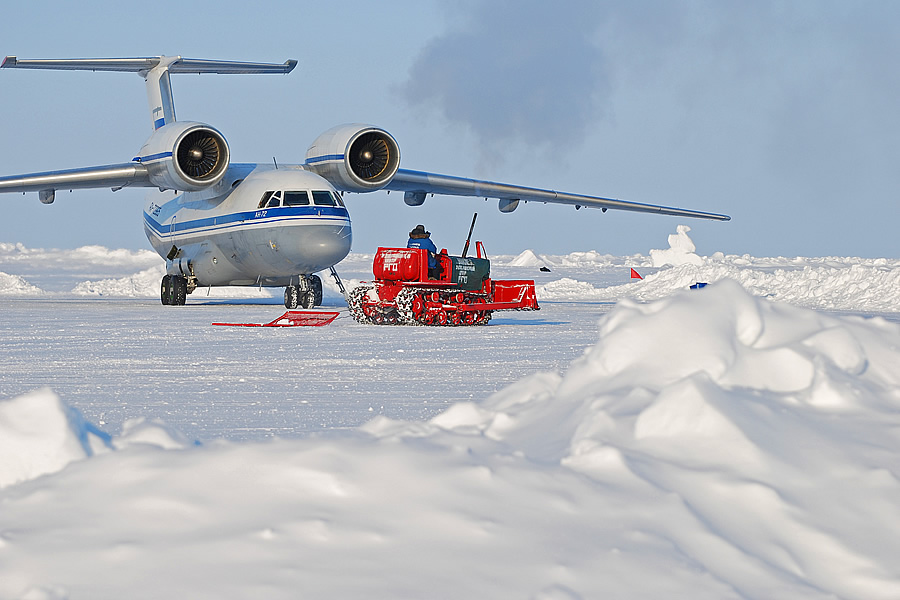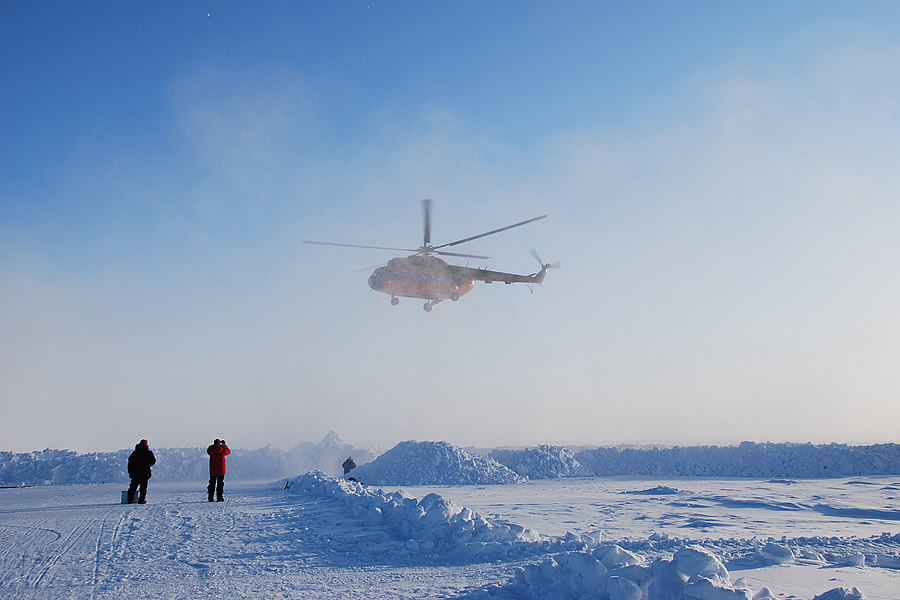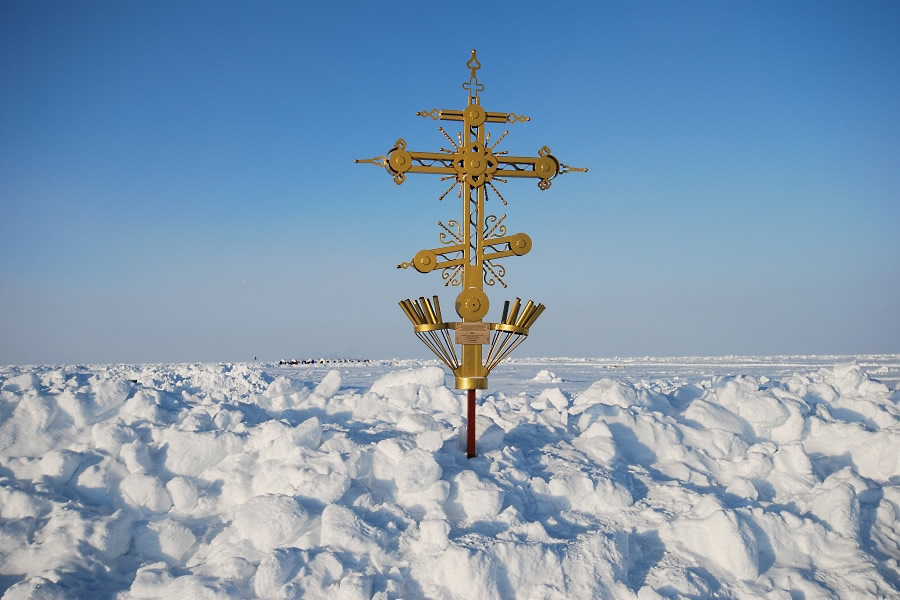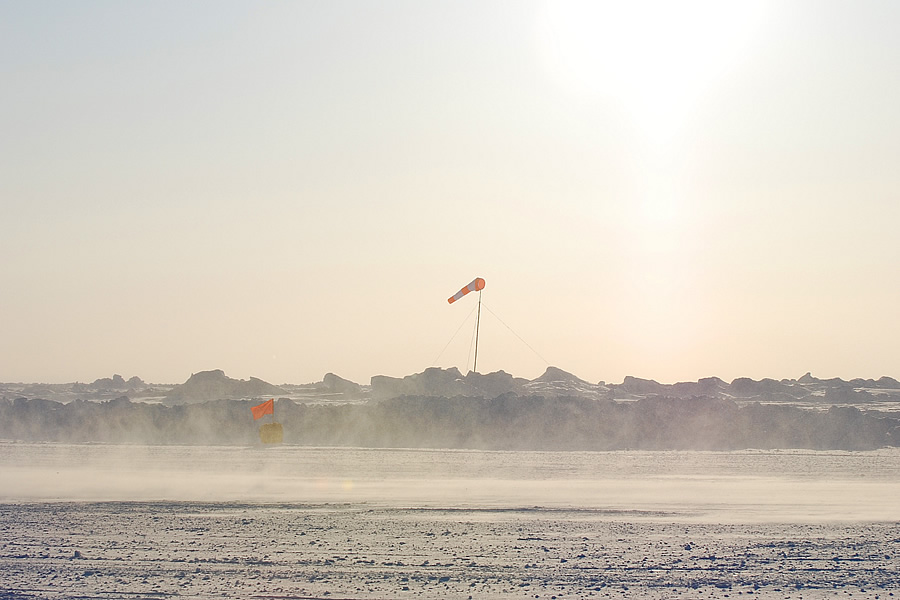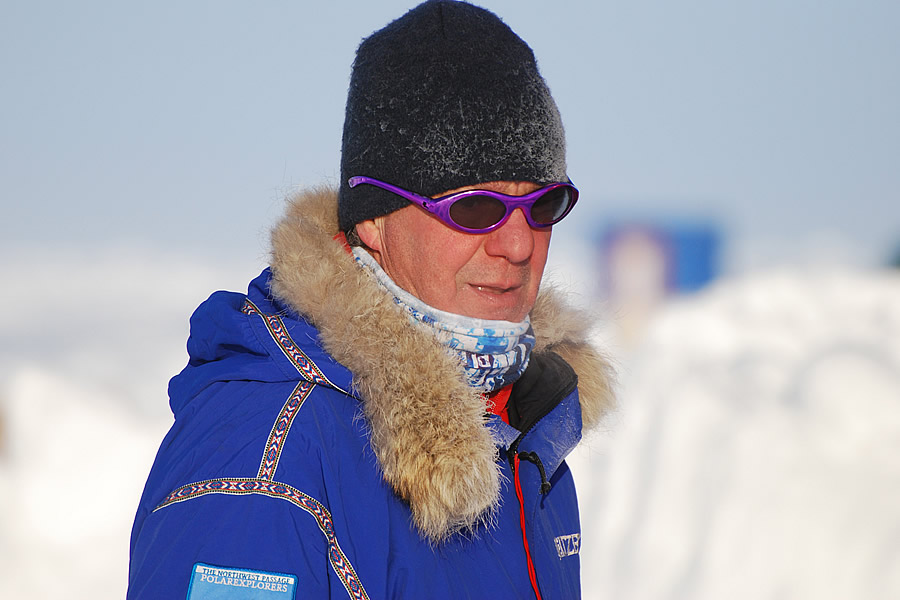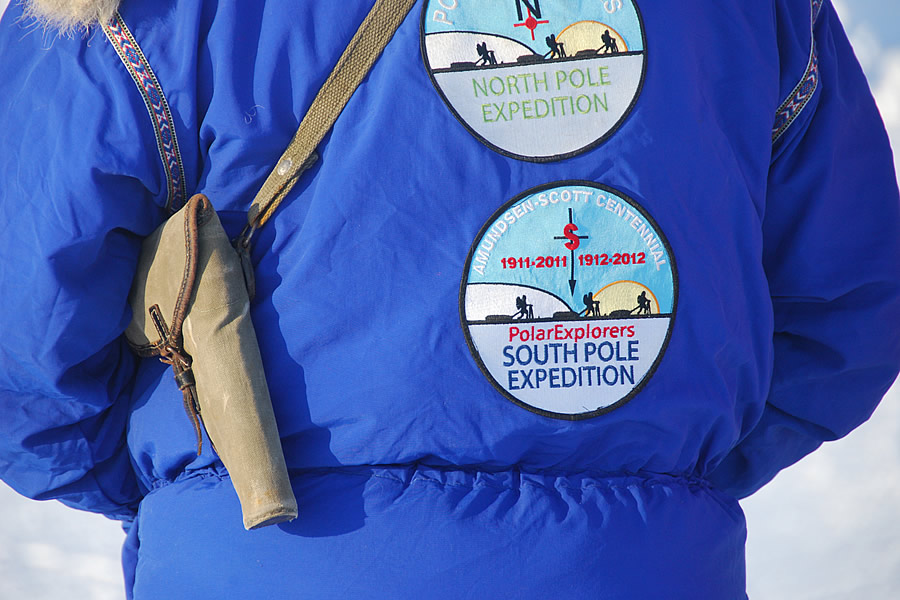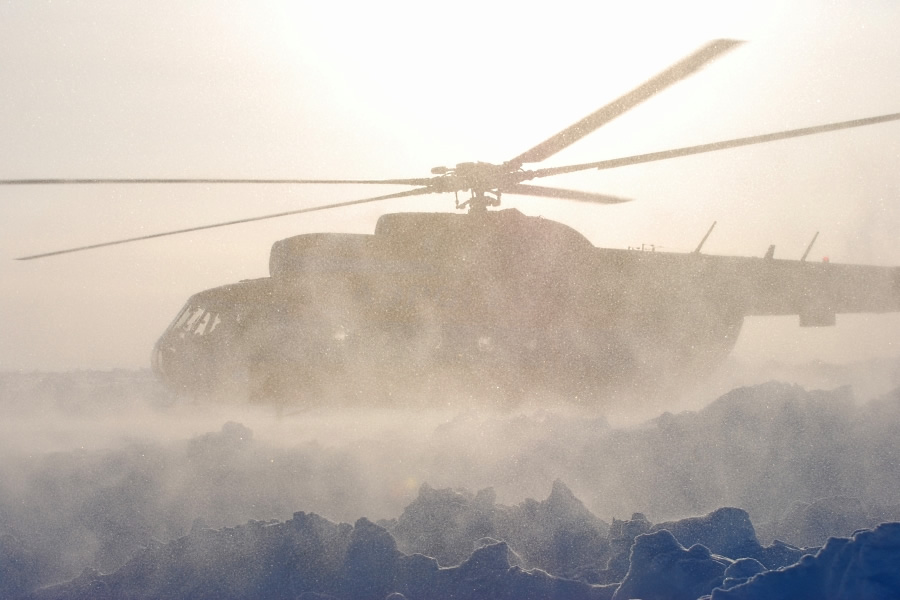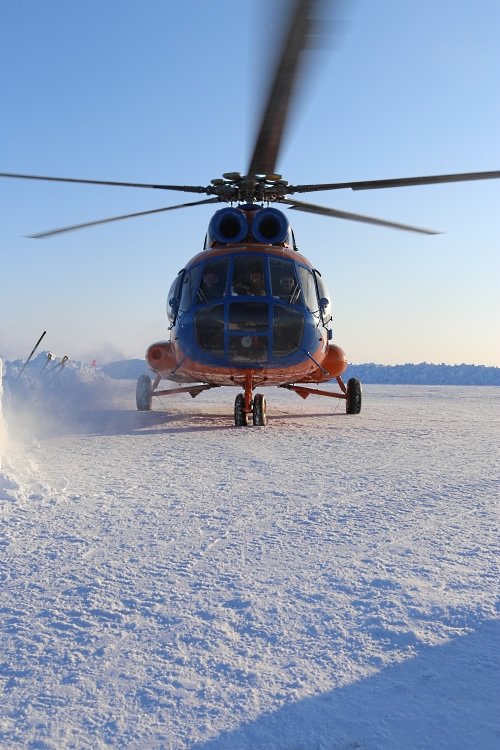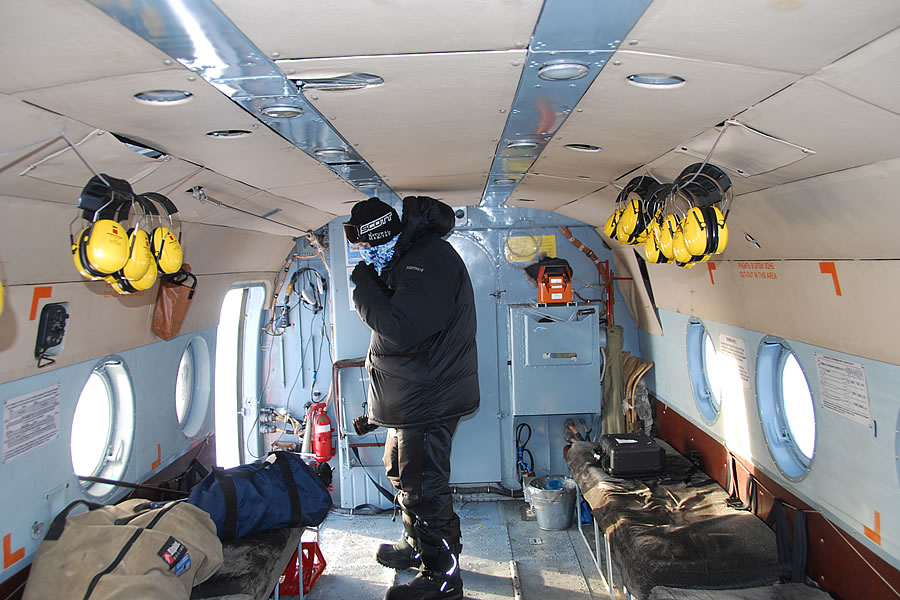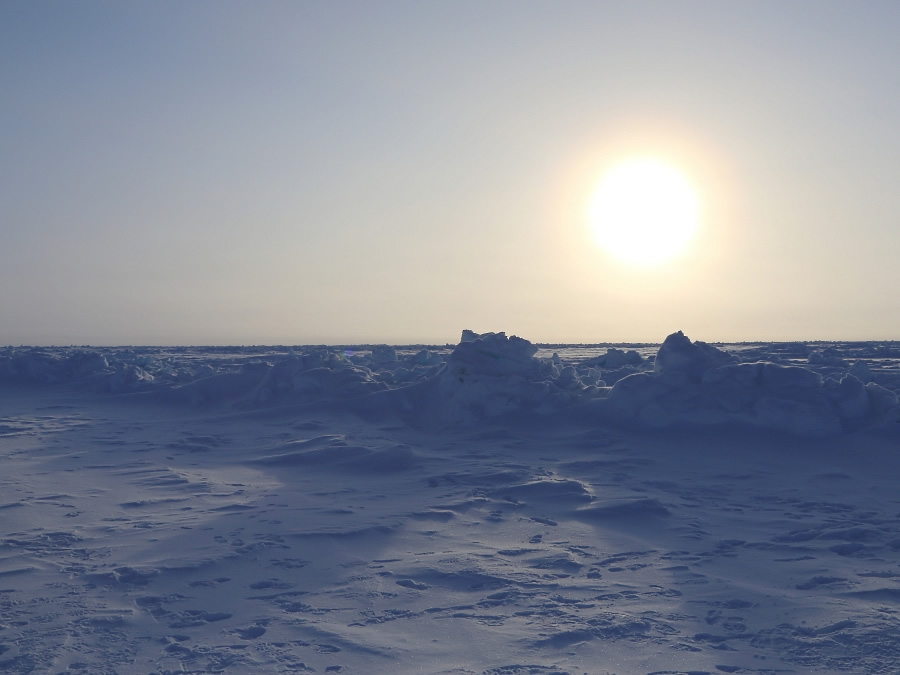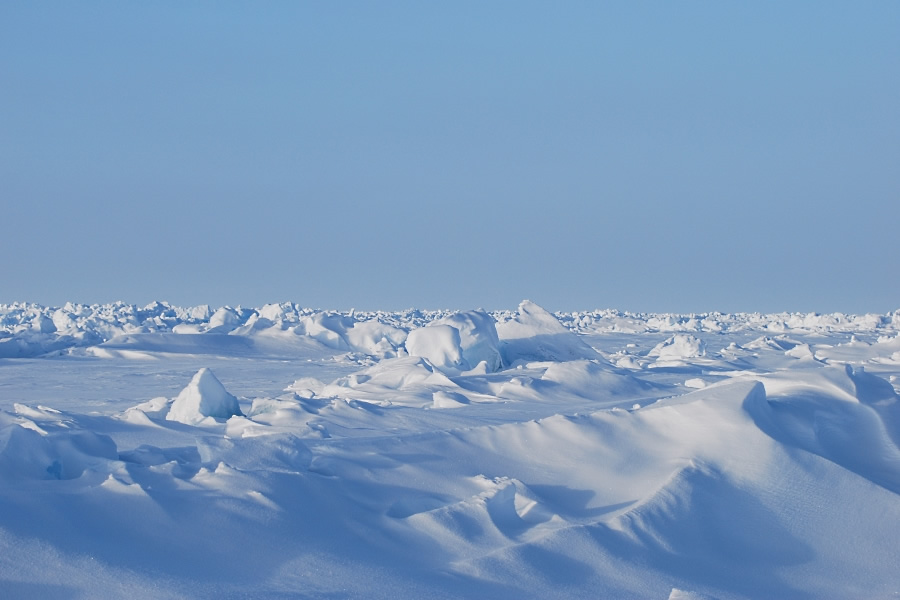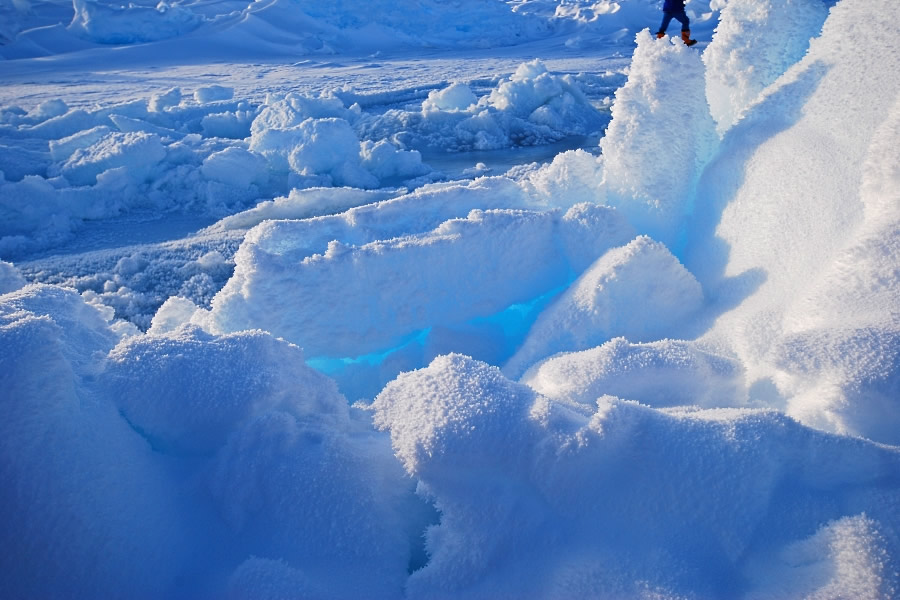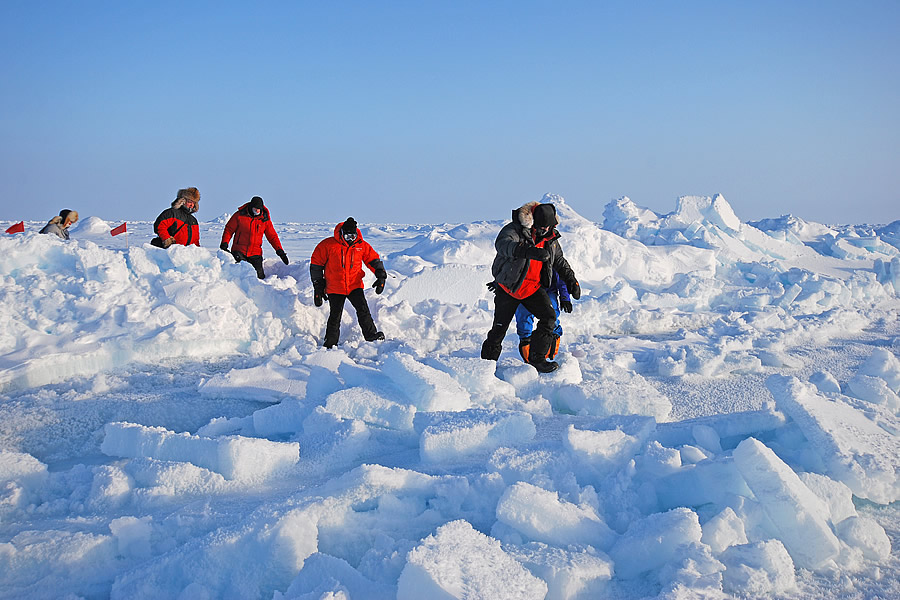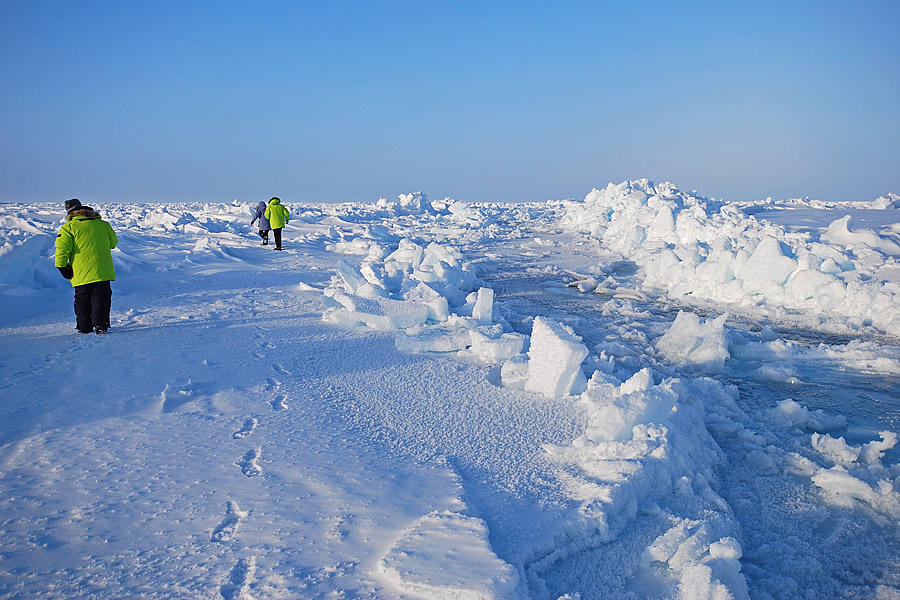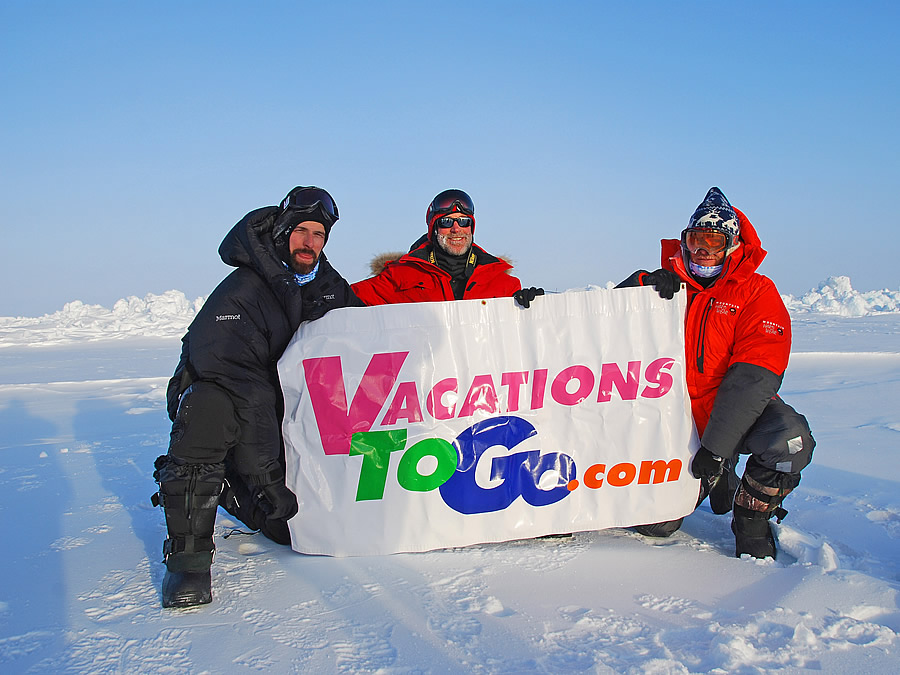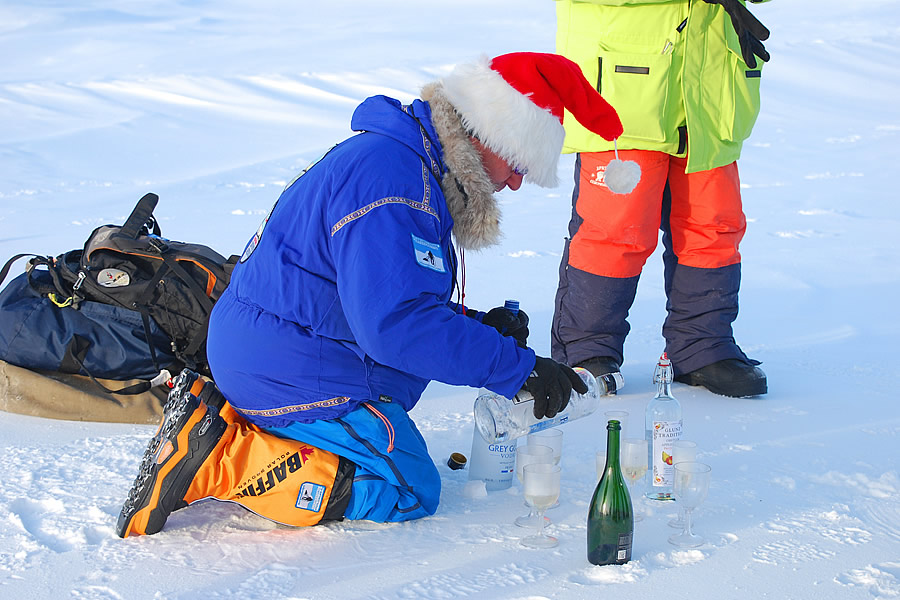Final Stop -- The North Pole
The Blue Tents of Barneo
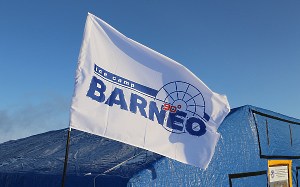 It is estimated that 200 people will stand on the ice at the North Pole in 2014, during the short April season that begins just after the sun rises and ends before the polar ice cap splinters into pieces. All but a handful will travel through Barneo.
It is estimated that 200 people will stand on the ice at the North Pole in 2014, during the short April season that begins just after the sun rises and ends before the polar ice cap splinters into pieces. All but a handful will travel through Barneo.
The Antonov 74 was specifically designed for short landings and takeoffs on ice runways in the Arctic and Antarctica. Two engines mounted above the wings give the plane a bit of a top-heavy appearance, like it might topple over on its nose at any moment. Ours had been modified to convert half the seats and the only bathroom into cargo space.
We climbed aboard in Longyearbyen carrying everything we would need to be wearing when we stepped out at the floating ice camp, Barneo, where the weather had turned bitterly cold. In a few minutes we were off, headed north, over the mountains and glaciers of Spitsbergen and then beyond, to the Arctic Ocean.
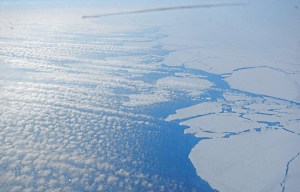 About 30 minutes into our flight, we reached the southern edge of the polar ice cap, broken into floes (huge chunks of drifting ice about 5-6 feet thick) of varying sizes with leads of open water in between. After another half hour, everything below us was solid ice and snow for as far as the eye could see.
About 30 minutes into our flight, we reached the southern edge of the polar ice cap, broken into floes (huge chunks of drifting ice about 5-6 feet thick) of varying sizes with leads of open water in between. After another half hour, everything below us was solid ice and snow for as far as the eye could see.
Barely two and a half hours from takeoff, we began to descend toward the ice runway at Barneo. We dropped lower and lower, until we seemed to almost touch the ice, and then leveled off for a long minute or two. Suddenly, the blue tents of the camp flashed by my window, but rather than touching down the pilot gunned the engines, pulled the nose up and we began to climb again.
With no announcement and no flight attendant to ask why we had aborted the landing, our minds were filled with questions.
Had the runway cracked open to reveal the ocean below?
Was there a problem with the landing gear?
Were we headed back to Spitsbergen?
Where did I pack my flask?
The plane circled back and landed smoothly, leaving us to speculate that our Russian pilots had perhaps wanted a close visual inspection of the ice runway before committing to it, but we would never know for sure.
We scrambled into our insulated pants and polar parkas, our Baffin boots rated to -148 degrees F, our face masks and goggles, our hats, gloves and mittens. The door opened and we moved down the stairs into a strange, new world. A cold one.

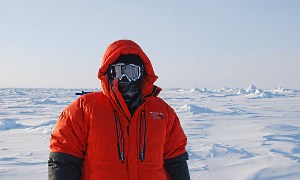 For the next eight hours, we explored the area in and around Barneo and reveled in our location only 60 miles from the North Pole. We claimed cots in our heated, 10-person tent, ate soup and cabbage and mystery meat for lunch in the mess tent, and sent texts home via satellite to confirm we'd made it to our next-to-last stop.
For the next eight hours, we explored the area in and around Barneo and reveled in our location only 60 miles from the North Pole. We claimed cots in our heated, 10-person tent, ate soup and cabbage and mystery meat for lunch in the mess tent, and sent texts home via satellite to confirm we'd made it to our next-to-last stop.
Mostly, we learned how to function at the camp's current temperature, -55 degrees F with wind chill, where exposed skin can be frostbitten in 10 minutes.
We found that exhaling through a mask while tilting your head to look down will cause your own breath to freeze on your goggles, making it impossible to see. That once your goggles are frozen over and you must remove them, your breath freezes on your eyebrows and eyelashes and any facial hair, forming little white balls that grow and grow. In 15 minutes, you can see and feel the ice when you blink.
With goggles off, the skin around your eyes can freeze. A white spot on your face means your blood has stopped circulating in that area, the first indicator of frostbite. One member of our group had this within his first hour outside but received quick treatment from our guide before lasting damage was done.
We found that the batteries for our cameras and GPS and satellite phone all stopped working within 15 minutes outside the tent. You could change to a battery you'd kept warm in an inside pocket and get 15 more minutes but that required you to remove both your mittens and your gloves, which made your hands so cold they did not recover by simply putting everything back on.
Five polar bears had wandered into camp in the eight days since it opened, and the Russians had fired flares and pistols in the air to scare them off, so we were warned to be vigilant and not to leave the camp alone.
At 7pm, Norwegian time, dinner was served in the mess tent -- beans and bread and some kind of large meatball of unknown origin. I wasn't quite over lunch at that stage so I ate a Snickers bar from my duffel bag and decided I could live on them if I had to.
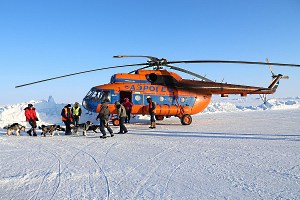
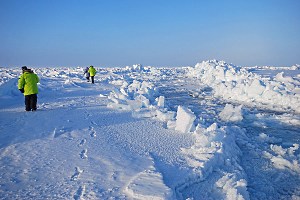 At 8:30pm, the word we'd been waiting for arrived. All the tourists in the camp, about 20 people, were to report to the runway and the Russian Mi-8 helicopter for our flight to the North Pole!
At 8:30pm, the word we'd been waiting for arrived. All the tourists in the camp, about 20 people, were to report to the runway and the Russian Mi-8 helicopter for our flight to the North Pole!
For an hour, we flew in the deafening roar of the rotors, giddy with anticipation. From my seat by the cargo hold in the back, I had no window, but they were covered with frost anyway. Our chopper sat down so smoothly in the snow I did not realize we had landed until the engine was shut off.
The helicopter must stay well clear of cracks in the ice, snowdrifts and the pressure ridges that form when ice floes collide, so we were still 200 yards and one floe removed from the pole when we stepped outside. We followed our guide to the edge of the floe and looked over a pressure ridge to see an unexpected obstacle between us and the adjacent floe -- a band of new ice 10 yards wide, much thinner than the floes on either side. The two floes had pulled apart and the exposed seawater had only recently frozen over.
The group of 20 was split on whether to proceed. Most decided they were close enough to the pole and stayed behind but our guide offered to lead anyone who was determined to reach the precise spot over the thin ice.
"If the ice breaks and you start to fall through to the water, lunge forward," he advised.
Seven of us followed the guide over the ridge and down, onto the new ice, which popped and cracked as the wind and ocean current ground it against the large floes on either side.
We stepped up to the next floe and marched the last 100 yards to the northernmost spot on Earth -- 90 degrees north -- where every direction we looked was due south. At this time of year, the sun does not get higher or lower in the sky but makes a complete circle every 24 hours, just above the horizon. All time zones converge at this spot so no time is more appropriate than another.
 We tried to let the reality of our location sink in as we took photos of ourselves with the various flags and banners we had brought. We would have stayed longer on that spot but the Russians called out that the new ice was breaking up and to come immediately to cross back to the original floe. No one argued.
We tried to let the reality of our location sink in as we took photos of ourselves with the various flags and banners we had brought. We would have stayed longer on that spot but the Russians called out that the new ice was breaking up and to come immediately to cross back to the original floe. No one argued.
We tiptoed over the new ice and back to the floe with the helicopter -- our life raft -- where we celebrated with Champagne on the (North Pole) rocks and called and texted family and friends, via satellite, to tell them we had made it.
By the time we boarded the helicopter two hours later, my goggles had frozen over, my eyelashes and eyebrows and beard were covered in ice, my fingers ached from the cold and every battery I'd brought was dead. It was just about as good as two hours can be.
Back at Barneo, the celebration continued in the mess tent well into the morning. Americans and Russians, Brits and Germans, Italians and Kiwis. We were a tiny blue dot on the vast polar ice cap with a new storm bearing down.
And we were united that day, as all travelers are, in the spirit of discovery.
Sincerely,
Alan Fox
Executive Chairman
Vacations To Go
Related newsletters:
Headed for the North Pole
Exploring the World's Northernmost Town of Longyearbyen



